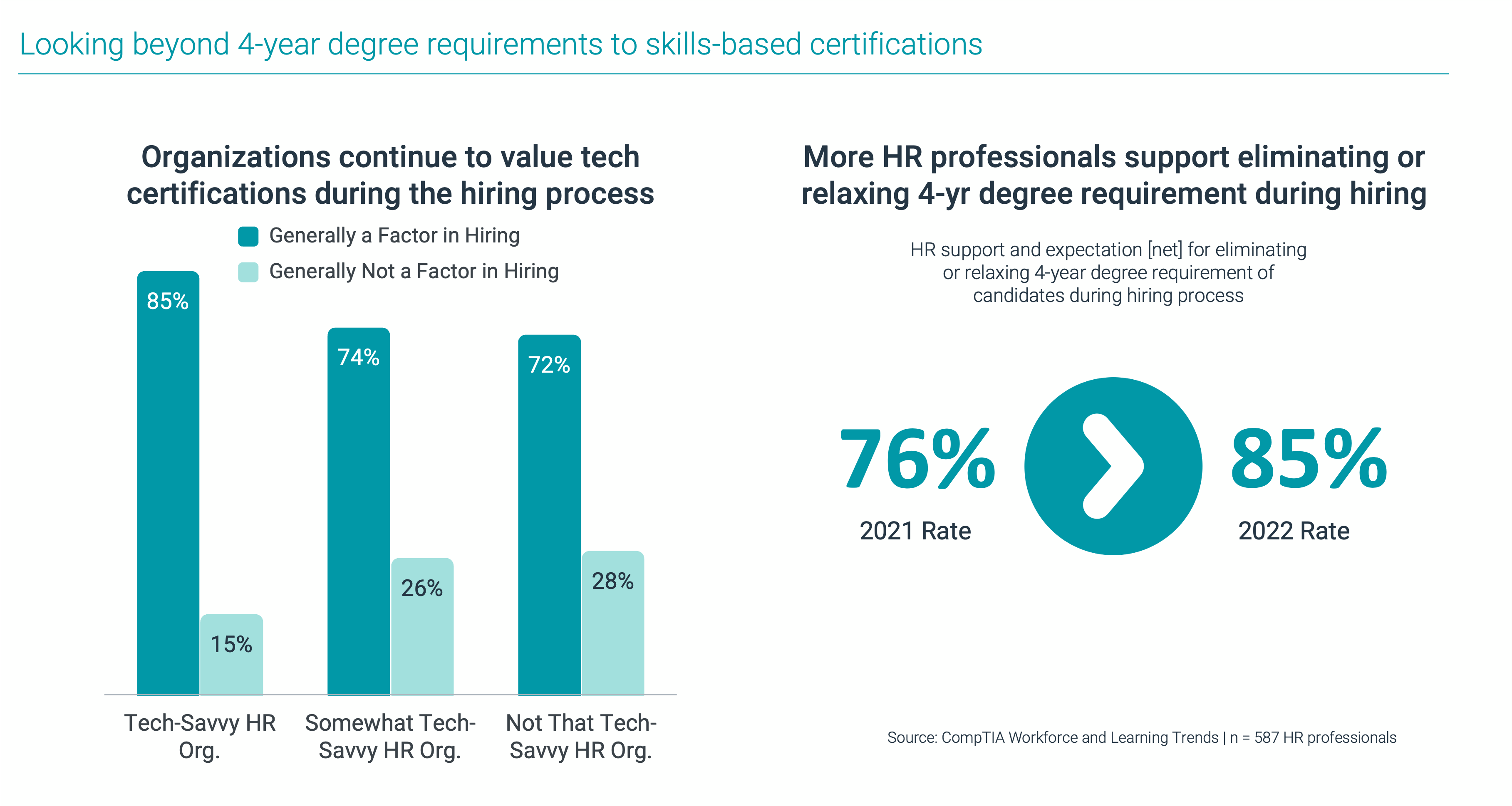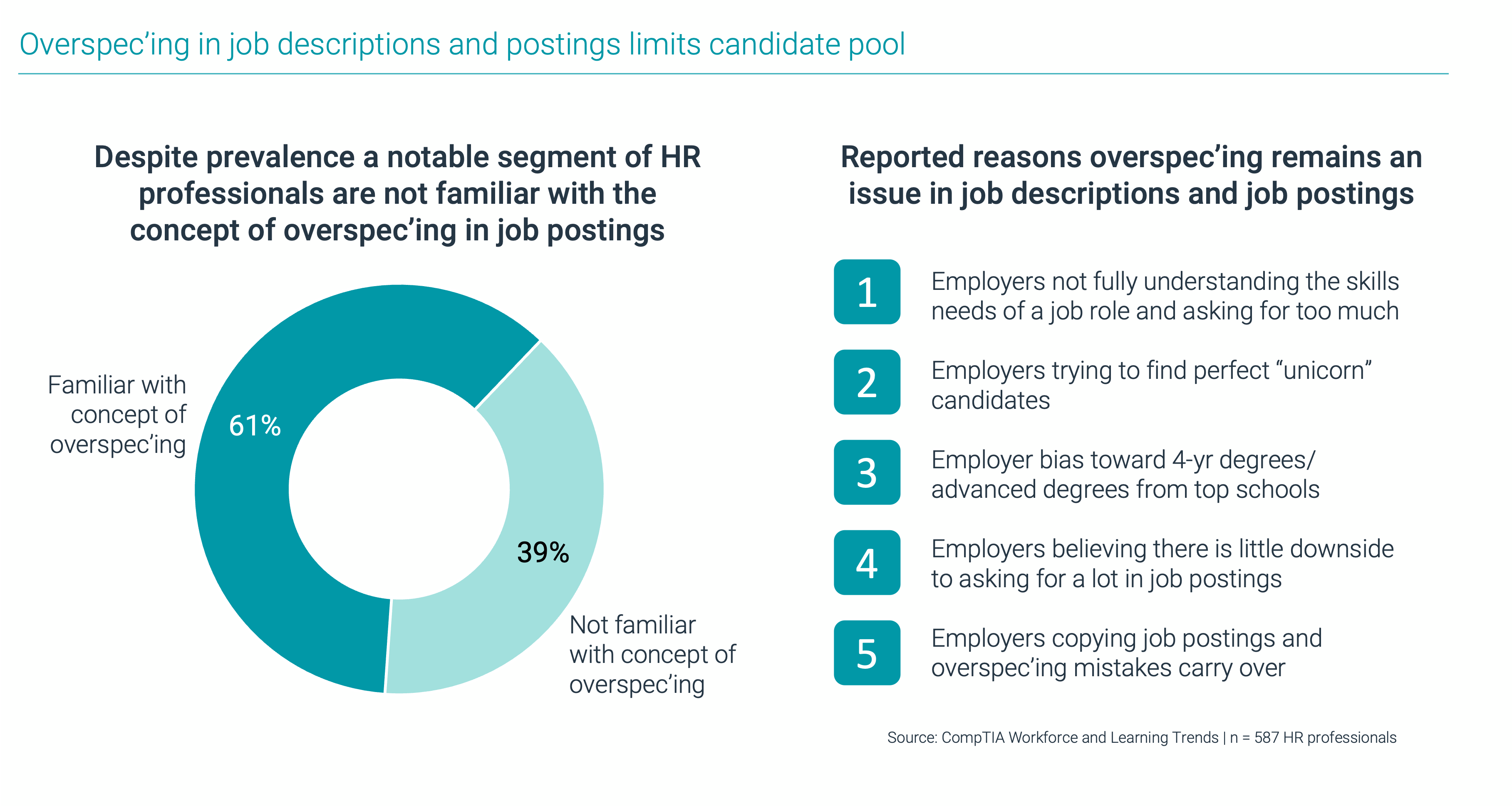Talent Pipeline Shortcomings Highlight the Need for Human Infrastructure Investment
Apple, IBM, Google and Tesla, just to name a few, announced the elimination of the four-year
bachelor’s degree as an application requirement. As noted by former IBM CEO Virginia Rometty,
“cloud, cybersecurity, financial operations and many healthcare jobs can all begin without a
four-year degree, and many applicants may choose to get more education later on.”
Granted, these large tech companies tend to attract the best and brightest candidates and that
alone wouldn’t suggest that the four-year degree is losing its influence on hiring. But the movement
to consider a broader range of indicators of career readiness may be reaching a tipping point.
An extensive study of 51 million employer job ads between 2017 and 2019 by The Burning Glass Institute
showed that 46% of occupations had some level of “degree reset” or “downcredentialing.” A structural
change may have been underway before the pandemic.
The trend is also apparent in the CompTIA survey of HR leaders: Net support for eliminating or
relaxing degree requirements in hiring increased from 76% to 85% this year; 76% say certifications
are a factor in IT hiring; and 47% expect certifications to become even more important as a candidate
evaluation tool.

Moving to skills-based hiring and career development requires rethinking and redesigning many familiar processes. Sattar says that performance assessment using virtual machines that are informed by real-world examples and problems is becoming more common. This method has the advantage of prioritizing results over process, compared to traditional assessments.
Teresa Sears, Vice President, Product Management at CompTIA, says pre-assessment is one tactic that can help. “A big challenge I hear from employers is understanding the skills gap,” she says.
“You need to know both where you are and where you want to get to. Without pre-assessment, it's really hard. But you can't take away the context of the organization that person is working in and what the goals of that organization are.”

Overspecing has downsides for employers and job candidates
Overspec’ing is the tendency to specify more (sometimes far more) skills and credentials than warranted for the position. It results in job postings that few if any individual workers are qualified for, hence the myth of the “unicorn” candidate. A CompTIA survey of 600 HR professionals indicates a majority acknowledge the practice.One cause of overspec’ing is that managers or hiring committees believe there is little downside to a long wish list, since they intend to be flexible about it once they have candidates in front of them. But before that can happen, many potential applicants remove themselves from consideration. They are discouraged by the distance between themselves and an unrealistic ideal.
The survey also reveals an element of unintended overspec’ing whereby employers hiring for a new job role may not have a firm grasp of an appropriate set of skills and qualification. This can be especially challenging with emerging technology job roles where the position itself is evolving.
The overspec’ing habit takes three common forms: defaulting to a 4-year degree or high level certification requirement without considering if it is truly necessary; asking for exaggerated years of experience as a proxy for relevant skills and the ability to do the job; and the practice of scope creep whereby job roles expand over time with skills and qualifications that eventually exceed the job level. Taken together overspec’ing leads to downsides for employer and job candidates alike.
Please visit the CompTIA research hub to access the full Workforce and Learning Trends report.